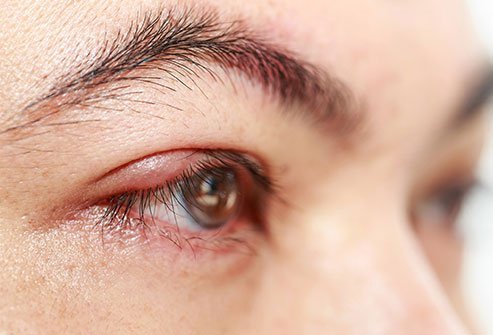Is a Sty Contagious?
What is a sty?

A sty is a localized infection with inflammation of the eyelid margin, usually involving eyelash hair follicles or eyelid glands (meibomian glands). A sty (also spelled stye and also termed a hordeolum) is usually a painful, reddish, and swollen area on the eyelid margin and is caused most often by the bacterium Staphylococcus aureus (about 90%-95% of cases).
How will I know if I have a sty?
Most people know when they develop a sty because of the symptoms and signs that are as follows:
- A red lump or bump begins to occur on an eyelid margin that resembles a boil or a pimple.
- Almost always there will be eyelid discomfort or pain.
- Some individuals will develop eyelid swelling.
- Some individuals will have increased tear formation.
Sometimes a sty is confused with a chalazion, which is a blockage of a small oil gland behind the eyelashes. It differs from a sty because it is usually not painful and is most prominent on the inner side of the eyelid. However, the treatment for both conditions is essentially the same.
Most doctors diagnose a sty simply by observation; no tests are needed.
Is a sty contagious?
There is some disagreement among experts about the contagiousness of a sty. In most individuals, a sty develops when some normal occurring and/or transient bacteria multiply in the eyelid margin. Because these bacteria are not necessarily transferred from one person to another, some investigators consider a sty to be noncontagious. Others, however, feel that if another person contacts the causative bacterium and they touched their eyes, it is possible to transfer the infection, but this happens very infrequently; nonetheless, these experts consider this to be a contagious disease. The compromise position would be that, in most instances, a sty is not contagious unless certain circumstances are met, such as touching a sty and then transferring the causative organism to another person, where it may or may not cause a sty or other infection to develop.
How is a sty spread?
Most of the time a sty is not spread from person to person except under unusual circumstances. However, in the same person, the infection responsible for a sty can spread to other areas of the eyelid and eventually to other components in the eye to produce an emergency condition termed orbital cellulitis. This type of spread of a sty is very infrequent.
When will I know I am cured of a sty?
The majority of people who get a sty usually see it resolve in about seven days; the symptoms gradually disappear. Also, many people self-treat by utilizing warm compresses that eventually cause the sty to discharge or drain a small amount of pus. This simple treatment can hasten recovery. However, people who develop a sty are more likely to form another one in the future. There are no tests indicated for diagnosis of a sty.
When should I contact a health care professional about a sty?
Most individuals who develop a sty do not need to contact a health care professional since most infections are either self-limiting or can be easily treated by warm compresses at home. However, if the eyelid begins to develop generalized redness and swelling, you should contact your physician and/or ophthalmologist urgently. Some of the infections will not drain (even after warm compression treatments have been done for two to three days) and require small incisions or removal of an eyelash to drain the pus from a sty; this should be done by a trained health care professional or an ophthalmologist.

